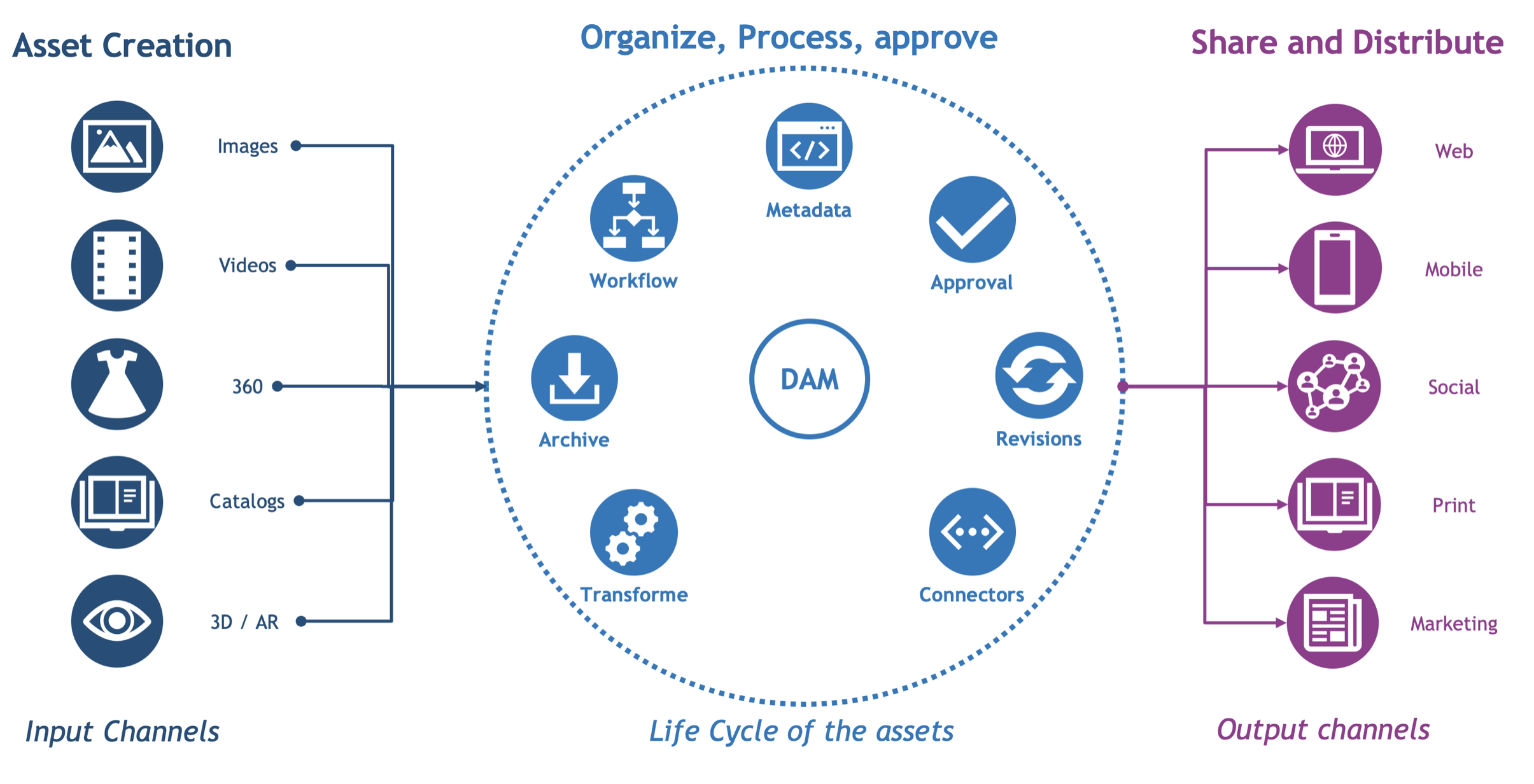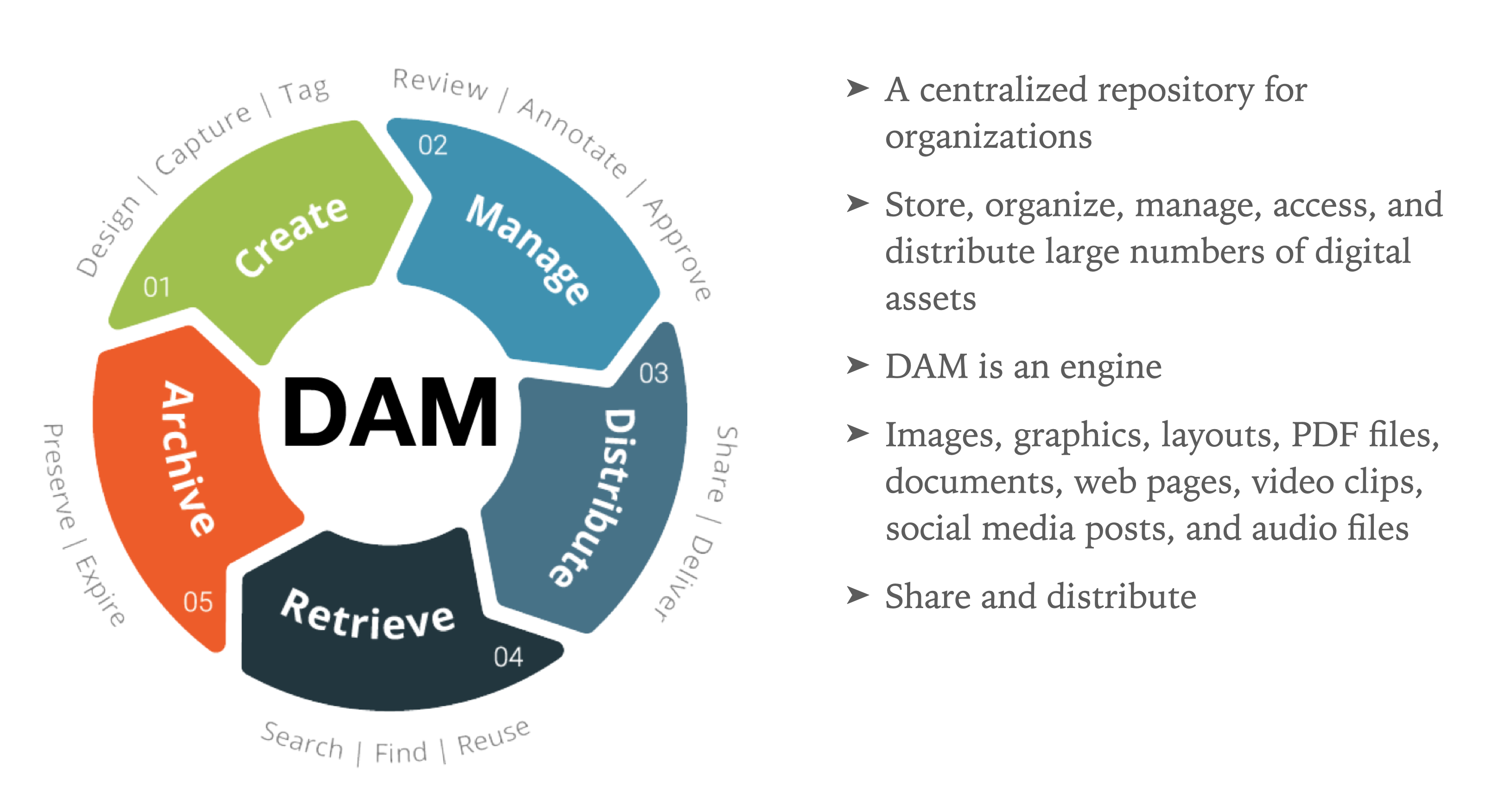What is Digital Asset Management and Why It Matters for Organizations
A digital asset management system (DAM) is a centralized repository in which organizations can efficiently store, organize, manage, access, and distribute large numbers of digital assets such as images, graphics, layouts, PDF files, documents, web pages, video clips, social media posts, and audio files.
How does a DAM enable effective content marketing ?
A robust DAM offers benefits that span the content life cycle – from creation to management to distribution to storage – so it can help your organization master the challenges of modern content marketing.
A DAM acts as a single source of truth for your marketing organization. It brings together people, processes, and data to make many essential content marketing workflows – including creative collaboration, content review and approval, brand management, version control, and license management – more streamlined and efficient.
A DAM system acts as a single source of truth for your marketing organization
By allowing your team to create content once and then customize it for delivery across multiple media channels, a DAM helps you reach more customers on more platforms with more targeted content so that you can be more effective at making sales.

And the best DAMs can interface with your existing marketing automation solutions to provide a single view into all of your marketing data, analytics, and resources.
- By making internal processes more efficient and enhancing team collaboration, a DAM frees staff to spend more time on the core creative work that brings in revenue.
- By making it easy for team members to access the digital assets they need, a DAM speeds review, approval, and delivery of final files to get content to market faster, giving you an edge over your competition.
- By offering permissions-based access to digital content as well as digital rights-management controls, a DAM helps avoid common problems such as publication of outdated, off-brand, or unlicensed creative assets. This helps improve the quality of your brand communication to protect brand investments and even mitigate business risk.
- By giving authorized users quick, easy access to the files anytime, anywhere, a DAM eliminates time-intensive, costly file searches and recreation of missing assets.
- A DAM eliminates the need for staff to post and deliver files to multiple locations. In addition, it eliminates the costly errors and inefficiencies caused by different versions of the same file in multiple places.
- A DAM can be integrated with your marketing resource management (MRM), product information management (PIM), content management system (CMS), customer relationship management (CRM), or other marketing automation solutions. It acts as a single source of truth that helps you better manage projects, allocate resources, personalize and target content, and understand which assets are performing best across different channels.
- A DAM makes it significantly faster and easier to repurpose content across devices and platforms, opening up possibilities for new revenue streams. For example, some agencies make asset distribution a profit center by charging for every upload or download.
Agencies can use a DAM to create secure, private web-portal sites customized for individual clients, partners, or teams. - A DAM can help the sales team centralize proposals so that the entire team can easily review and collaborate. Efficient digital asset management also can be a value-added service that can help win business.
The best DAMs also track the traffic for timely reporting and, if applicable, client billing.

